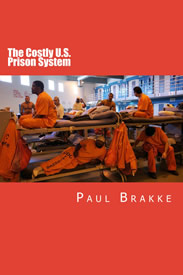In the previous articles in this series I discussed how the illegal immigrants commit more crimes, especially drug trafficking, and how the crimes they commit add to the crime problem already facing America.
The younger more recent illegal immigrants are the prime offenders, since just by virtue of their youth, they are more likely to get involved in crime, as well as participate in the gang activity of the many gangs made up primarily of illegal immigrants, such as MS-13.

Therefore, something must be done to deal with this problem and find some solutions to both reduce illegal immigration and the crimes the illegal immigrants are involved with.
Following are my recommendations:
1. Secure the border. Even though liberals claim that there is a net migration back to Mexico, there are still bad hombres entering along with others illegals to improve their lives and those of their families. An 1800 mile-long concrete wall may not be the answer, but some combination of walls, fences, greater patrols, drones, and more border security agents is. These different methods should all be used to provide additional security at the possible entry points for illegal immigrants. This border security should include having a check for passports or other entry documents at airports for international flights and highways from Mexico and Canada.
These checks should incorporate additional checks on the validity of the documents provided, such as fingerprint checks or eye retina scans. Border security agents should tighten up the other ways that illegal immigrants might get into the country, such as by boats to the East and West Coast, tunnels from Mexico, and land journeys through the back country. While walls might work in some areas, illegals might still come through tunnels, rivers, or other natural points of entry, where the terrain doesn’t permit walls. Accordingly, more efforts should be made to look for and block tunnels and use drones to look for parties of illegal immigrants trying to get into the United States by land or water.
2. Discourage illegal immigration by eliminating the access of illegal immigrants to most services provided by city, state, or local governments. This may even lead many such immigrants to leave the country voluntarily. This will also reduce the high cost of having to locate and deport millions of illegal immigrants, estimated to be about 11 million around the U.S. Such services might include drivers’ licenses, health benefits, education, and the like. Should illegal immigrants already have access to benefits, these could be cancelled or they might be prevented from renewing their access, whichever policy is more efficient for the relevant agency.
3. Monitor immigrant crime more closely. Require the local and state criminal justice departments at all levels — from the local police to the state attorney’s journal office and courts — to keep accurate records of all crimes, and include information to indicate whether the person arrested, tried, convicted, and sentenced to prison is a legal or illegal immigrant and from what country. Any sentence meted out should also be recorded.
These departments should also file a copy of these records each month with the Department of Justice, so the data for all of the jurisdictions and states can be combined to illustrate clearly the different types of crimes committed by both legal and illegal immigrants. This recommendation is being made since there is little local or state data available. The Department of Justice reports only provide detailed statistics for federal crimes and prisoners in federal prisons; but 90% of crimes are committed and processed at the local and state level. Only in this way will be have a clear picture of the extent to which illegal immigrants are involved in criminal activity across the country.
4. Institute strict penalties and deportations for crimes committed by illegal immigrants. These policies should be instituted both to promote public safety by getting illegals committing serious crimes off the street and a deterrent to potential criminals. In the event an illegal is arrested, he or should be subjected to a no-bail condition prior to a trial, and be given the option of leaving the country through self-deportation or risking harsh penalties as well as deportation if found guilty. Those deported due to criminal activity should be tagged with implantable microchips so that they can be more readily identified if they attempt re-entry to the U.S.
5. Encourage the cooperation of community members to support the arrest or deportation of illegal immigrants engaged in criminal activity. Community members who know of illegal immigrants often help to hide them or prevent their apprehension by the police or ICE. A community outreach program is recommended to provide further education and support, so community members will be more receptive to law enforcement professionals who are trying to find, arrest, and subject to deportation illegal immigrants involved in criminal activity.
This outreach should be designed to help community leaders understand the value enforcement strategies provide to the community by making it safer. This outreach might take the form of local forums and meetings in the homes of volunteers and block captains, much like crime prevention meetings.
6. Limit the number of legal immigrants to the United States each year to 500,000 and be more selective about the immigrants admitted. As a minimum, they should be able to pass a basic English test, and should have attained at least the equivalent of a high school education. They might also be given points for their achievements in school and professionally, and the immigrants with the highest scores would have the opportunity to participate in a drawing for who can come to the U.S. Points would be deducted for skills and occupations where there are sufficient numbers of qualified U.S. citizens.
Provisional temporary work visa status could be provided for those occupations in high demand lacking sufficient numbers of qualified U.S. citizens, and the immigrants could earn points toward a subsequent drawing during their stay. In this way, only the best and brightest of the prospective immigrants would apply for the 500,000 spaces available each year. Family members and relatives might be given additional points because of their relationship, but then they would still have to qualify under the point system for entry.
Consider making English the official language and requiring fluency in English before granting permanent residency green card status. This may reduce child education costs by limiting bilingual education and further discourage illegal immigration of families.




